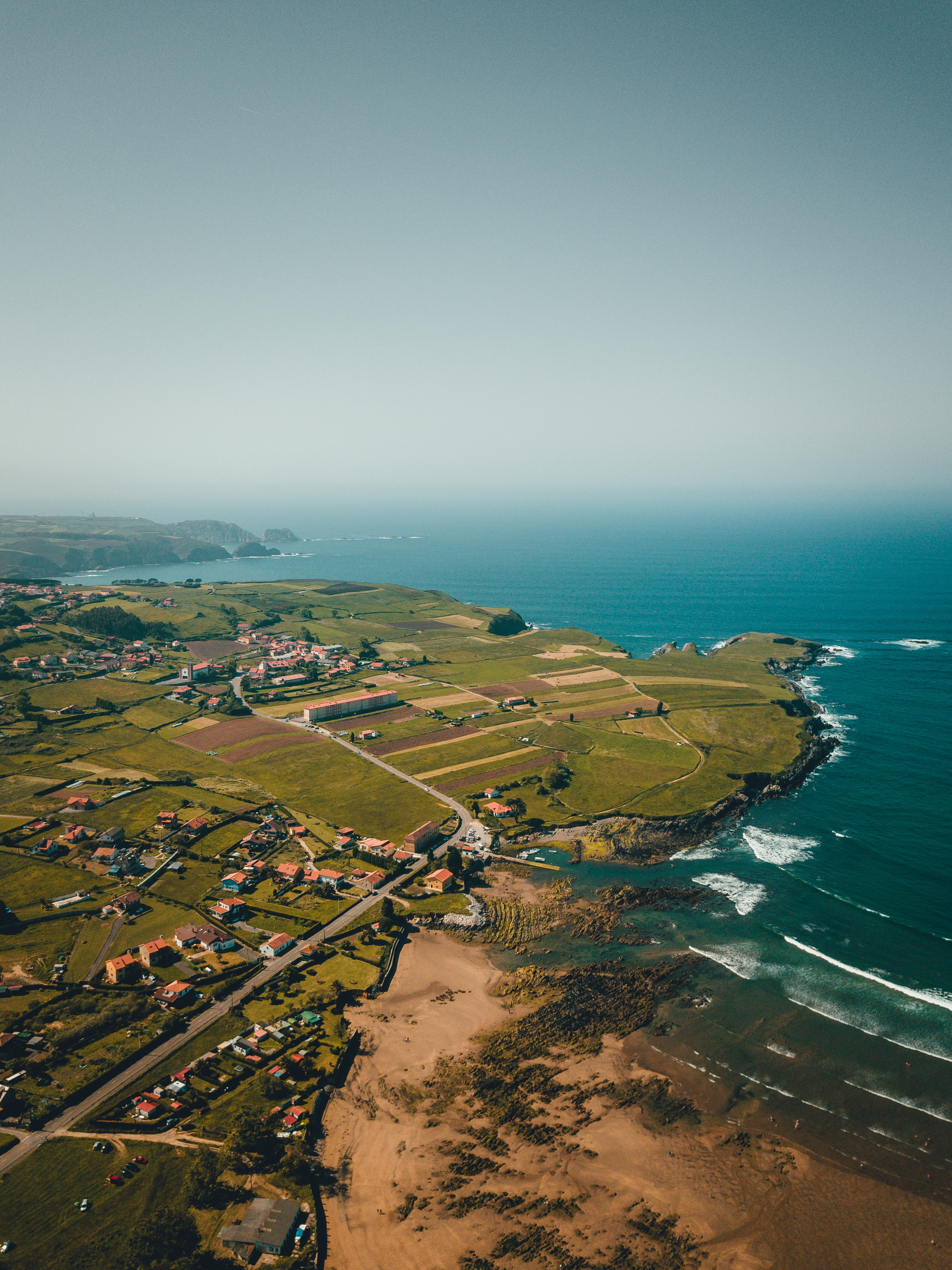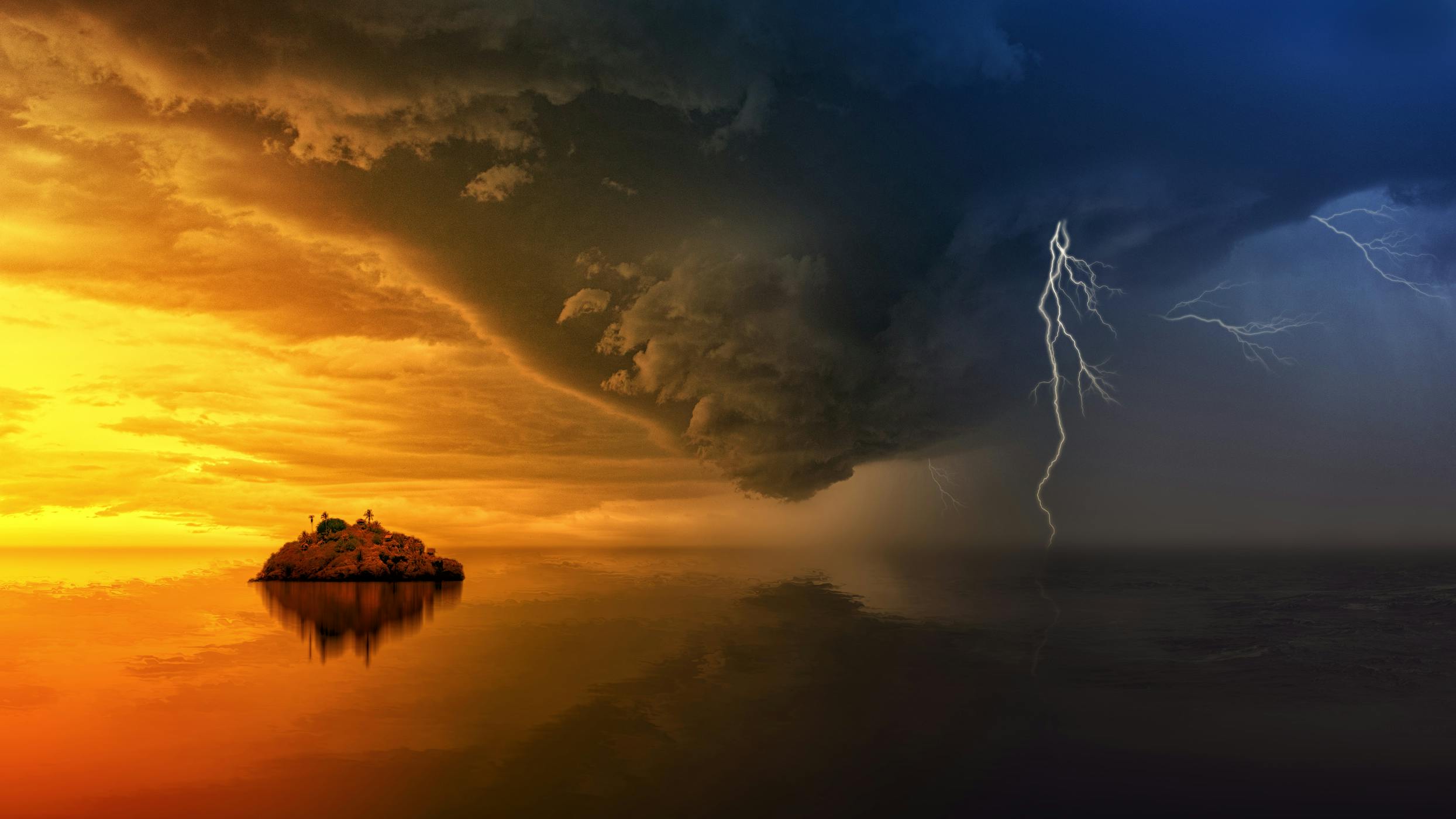Europe is facing an onslaught of extreme weather conditions, from scorching heatwaves in southern Italy to relentless wildfires in Greece. The soaring temperatures have put immense pressure on emergency services, leading to massive evacuations and challenging living conditions for both residents and tourists. With record-breaking temperatures surpassing 40 degrees Celsius in multiple countries, the region is grappling with the most intense heatwave of the summer, creating a ‘heat dome’ effect that brings stable and dry conditions.
The Mediterranean region, in particular, is bearing the brunt of this summer’s heatwave. Temperatures neared 50°C in most parts of North Africa, with severe wildfires affecting Algeria and Tunisia and causing dozens of fatalities and forcing the evacuation of hundreds of people. On the European side of the Mediterranean, temperatures reached an astonishing 47.4 degrees Celsius in Sicily and up to 45 degrees Celsius in parts of Greece, eastern Spain, Sardinia, and other regions in southern Italy.
According to the Copernicus Climate Change Service, “the current extreme heat is due to an anticyclone, a high-pressure system, that is dominating the upper atmosphere over southern Europe”. High-pressure systems compress and warm air, reducing cloud cover and allowing more solar radiation to reach the ground, which heats Earth’s surface during summer. Additionally, large-scale winds can blow hot air, like from northern Africa into Europe, contributing to heatwaves, although this effect appears less significant in the current heatwave.
Firefighters are struggling to control wildfires that have enveloped large areas of the Greek island of Rhodes, prompting the largest evacuation effort in the country’s history. Meanwhile, in Malta and in Palermo, Sicily, persistent power cuts have left residents without cooling systems or fans, and consequently without water supply, leading to what is now described as a summer of hell for many.
Scientists and economists alike are increasingly concerned about the serious economic and environmental consequences of climate change and extreme events.
The impact of climate change includes damage to property and infrastructure, lost productivity, mass migration, security threats, and coping costs. Extreme weather events like floods, storms, and wildfires require extensive repairs, and disruptions can harm various industries and daily life. Climate-related health risks and extreme heat may also affect productivity. Global warming may also lead to higher migration flows, increasing the need for coping measures.

According to the European Environmental Agency, weather and climate extremes caused, between 1980 and 2021, an estimated 560 billion EUR of economic losses in EU Member States, including 56.6 billion EUR from 2021. This means that a 10% of the total was reached in just one year over a range of four decades.
According to the EEA Report on Economic losses from climate-related extremes in Europe (8th EAP), a relatively small number of events is responsible for a large proportion of the total economic losses. Only 5% of the weather- and climate-related events with the biggest losses are responsible for 57% of losses and 1% of the events causes 26% of losses.

This results in high variability from year to year and makes it difficult to identify trends. Nevertheless, as extreme weather-related events are expected to further intensify in the future, it seems unlikely that related economic losses will decrease by 2030.
The economic impact of climate-related extremes varies considerably across countries. In absolute terms, the highest economic losses in the period 1980-2021 in the EU were registered in Germany followed by France then Italy. The highest losses per capita were recorded in Slovenia, Germany and Luxembourg, and the highest losses per area (in km2) were in Belgium, Germany and Luxembourg.
As reported by Euronews, Eurostat data show that climate extremes cost the EU more than 145 billion EUR in the last decade and an estimated 487 billion EUR between 1980 and 2020 across the 27 member states.

According to the G20 Climate Risk Atlas by the CMCC, climate change is affecting growth prospects and the overall systemic economic performance of Europe. Recent studies, following the 2014 IPCC AR5 report, show even greater economic losses than previously estimated. It is widely agreed within the research community that these impacts will disproportionately affect Southern Europe especially, exacerbating the North-South divide.
The Atlas highlights how the potential negative effects on the European Gross Domestic Product (GDP) are significant. By mid-century, with a low emissions scenario, these impacts could amount to 1.5% of the EU’s GDP; and by the end of the century this figure could rise to 4.7% of GDP, under a high emissions scenario.

Climate change can impact the European Union’s economy in various sectors.
Impacts on industry and infrastructure.
As reported by the Atlas, the EU coastline spans 68,000 kilometers, and nearly half of the EU population resides within 50 kilometers of the sea, mainly in coastal urban areas. Economic assets close to the coast are valued between 500 to 1,000 billion EUR, making climate change-induced sea-level rise and coastal storm surges potentially impactful. Over the past decades, river floods increased in some European regions due to changing rainfall patterns, while southern Europe experienced a decrease in floods. Flood events have caused over 4,300 fatalities and more than 170 billion EUR in direct economic losses (based on 2017 values) in EEA member countries between 1980 and 2017, with concerns of further intensification due to climate change.
Impacts on agriculture.
In the EU, climate change impacts on agriculture vary widely depending on crops and regions. Northern Europe might see slight gains or moderate improvements, while Southern Europe could face significant losses, especially for grain, maize, and wheat. The net economic costs for agricultural firms are estimated to be 1.7 billion EUR under a medium emissions scenario and 0.83 billion EUR under a high emissions scenario by 2050.
Sea level rise and river flooding damages.
As presented in the Atlas, if coastal defenses are not upgraded to contrast increasing climate change risk, expected annual damages to EU coastal infrastructures could reach 776 billion EUR in the second half of the century. Moreover, in a relatively moderate temperature increase scenario, river flooding losses can amount to roughly 21 billion EUR by mid-century and 30-40 billion EUR by the end of the century. Losses could reach over 70 billion EUR by the end of the century under a high emissions scenario. Results show that adaptation can reduce expected annual damages by roughly 90% at a cost that is roughly 2% of the avoided damage.

The Atlas highlights other relevant impacts on economic sectors, such as forestry and fishery, with consistent production losses under a high emissions scenario, and the energy supply network, which is expected to be subjected to increased stress from extreme weather.
According to the EEA Report, the future cost of climate-related hazards depends on event severity and frequency, but also on factors such as the value of the assets exposed and climate adaptation measures. Many studies highlight the benefits of nature-based solutions and comprehensive approaches to mitigate impacts in Europe. The EU’s Adaptation Strategy, adopted in 2021, aims to enhance resilience through increased adaptive capacity, potentially reducing economic costs and bridging the climate protection gap.
According to the IPCC, “risks to global aggregate economic growth due to climate change impacts are projected to be lower at 1.5°C than at 2°C by the end of this century (medium confidence). This excludes the costs of mitigation, adaptation investments and the benefits of adaptation.”
Therefore, taking proactive measures, such as enhancing energy efficiency, implementing early warning systems, and upgrading infrastructure, proves to be more economically efficient than post-disaster reconstruction. Evidence shows that, to safeguard a sustainable future and prevent irreversible consequences, reducing carbon emissions is of utmost importance.
“While mitigation may be expensive and potentially politically painful, I think it’s incumbent on economists to show that not doing anything is even more expensive.”
James Nixon, head of climate change macroeconomics at Oxford Economics
Moreover, according to the IPCC Special Report: global warming of 1.5 ºC, modeled scenarios aimed at limiting global warming to 1.5°C with minimal overshoot show a broad spectrum of global average discounted marginal abatement costs throughout the 21st century. These costs are approximately 3-4 times higher than scenarios targeting global warming below 2°C. However, there are still uncertainties and gaps in the understanding of the comprehensive economic costs and benefits of mitigation aligned with 1.5°C warming pathways.
“Climate change does not respect borders and boundaries; it doesn’t respect political election cycles. But what it does do is impact the lives of people globally. It’s not just from a moral perspective, it’s not just from an ecological perspective. It makes good business sense, and the cost of inaction is far greater than the cost of action.”
Simon Stiell, sixth Executive Secretary of the UN Framework Convention on Climate Change (UNFCCC)
More information:
- World Economic Forum: This is how climate change could impact the global economy
- Report: The economics of climate change: no action not an option, by the Swiss Re Institute
- Data: Climate related economic losses (source: EEA)






